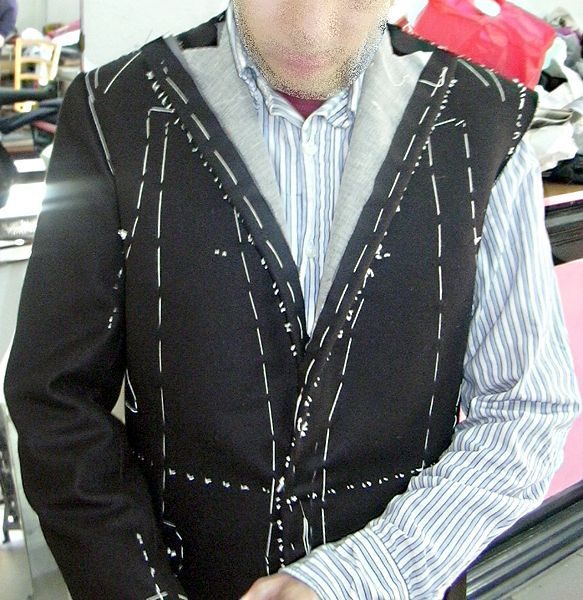
Ryan asks us: In your blog today you mentioned bespoke clothing. What does this refer to?
Bespoke clothing is made exclusively for the wearer, to the wearer’s exact specifications. The word comes from the verb “bespeak” – meaning in this context to tell the tailor what you want. The bespoke process includes extensive measurements, the creation of a unique pattern (or a last, in the case of shoes), and multiple fittings at various stages of the garment’s construction to ensure perfect fit. (The man pictured above is in the midst of such a fitting.) London’s Savile Row is known for housing numerous tailoring houses which create bespoke suiting, but there are bespoke tailors around the world. Off-the-rack clothing only came to prominence in the late 19th century, but its ascendancy turned perfectly-fitting clothing into a privilege of the rich.
Bespoke clothing is not to be confused with made-to-measure clothing, which is sometimes called custom clothing. Made-to-measure clothes are made specifically for the customer, but they are typically made by taking the customer’s measurements, then selecting a pre-made pattern which best fits those measurements. Rather than offering an infinite variety of styles as in bespoke clothing, made-to-measure typically offers a few key stylistic choices (fabric, number of buttons, style of pockets, etc.) The number of fittings varies in made-to-measure – in some cases an initial measurement is all that’s done, in some cases multiple consultations are taken.
Clothing not made to a customer’s specifications is called “ready-to-wear” or “off the rack." Typically men’s ready-to-wear suiting is altered by a tailor before being worn to ensure good fit.
